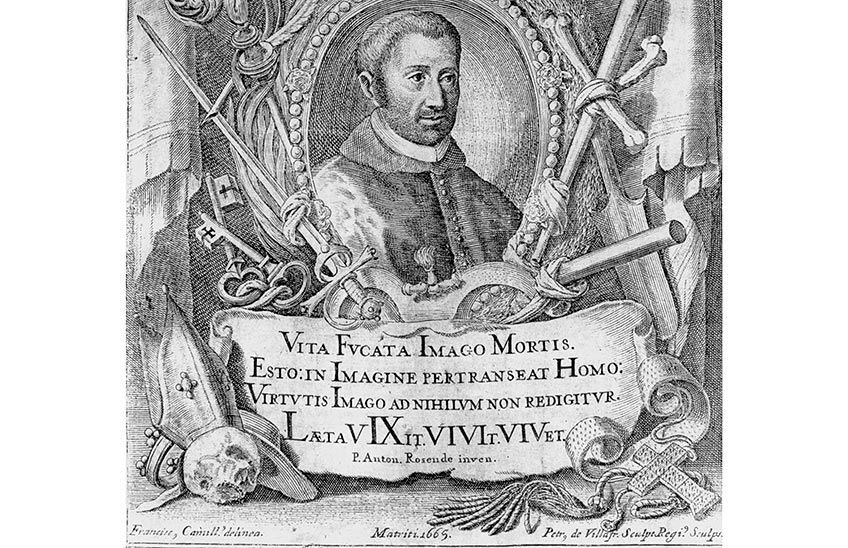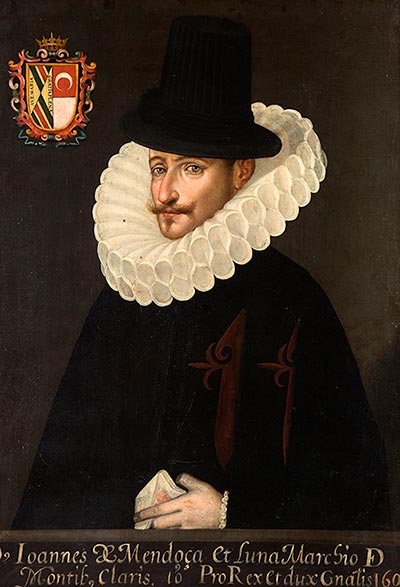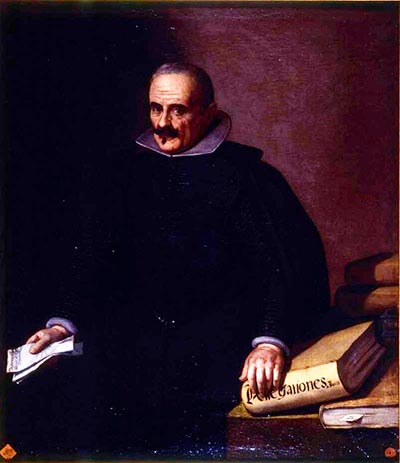<i>“Ayer pisándolo todo, hoy pisado de todos”</i>. Una reflexión en clave de <i>vanitas</i> sobre la vocación al sacerdocio de Palafox

PhotoCedit/Detailof the engraving of Juan de Palafox, accompanied by vanitas elements, by Pedro Villafranca, 1665.
The bishop-viceroy, now Blessed, Juan de Palafox in his Confessions or Interior Life provides countless facts and circumstances of his life, but he keeps silent about dates and names in most of the cases. The publishers of his Opera Omnia, in 1762, the Discalced Carmelites, illuminated some of the events narrated with precise data , but to this day, the mentioned work is still pending an annotated edition in which people and concrete contexts are identified and illustrated.
In chapters XII, XIII, XIV and XV of the aforementioned book he explains the reasons that led him to embrace the clerical state and be ordained as a priest in 1629. In the twelfth he alludes to how his person was softening, leaning towards the good, to the concession of the ecclesiastical income (Bursar's Office Tarazona) with which "God was putting God in his heart to be ordained". Likewise, he refers to the illness of his sister Lucrecia and the death at the same time of "two great men (each one in his genre) in that great Court where he served, (the one a great scholar and orator and the other a great president and lord and powerful and rich and gifted) God frequently put these two men before him for consideration, saying: Do you want fame as an orator, as a learned, wise and knowledgeable man? Look at that orator lying on a cloth of cloth with his study made grass of worms, in that you will stop with your fame and opinion. Do you want power, presidencies, riches, greatness, tastes, gifts? Look at that powerful, rich, great president, given away in a coffin surrounded by axes that take him to bury and to be a companion of corruption, disgust and worms. This is as far as you can get with your desires. See what human, ambitious and worldly desires stop at."
They are both stagings of real vanitas, so frequent in Spanish literature and painting of the sixteenth century, when it developed as a genre of the Baroque, with high symbolic value, reflecting on the futility of the world and the human knowledge . Based on the biblical quotation Vanitas Vanitatum et omnia vanitas ("Vanity of vanities and all vanity" Ecclesiastes, 1, 2), its message is the futility of worldly pleasures in the face of the certainty of death, encouraging the adoption of a somber view of the world.

Don Juan Manuel de Mendoza, Marquis of Montesclaros, Viceroy of New Spain and Peru, died in 1628. Chapultepec Castle. Mexico
The vanities in sermons, engravings, paintings and written texts denounce the relativity of knowledge and the vanity of the human race subject to the passage of time, to death. In the vanities, the objects represented are all symbols of the fragility and brevity of life, of the passing of time, of death. Among all these symbolic objects, the human skull, symbol of death, is one of the most common. This memento mori (remember that you are going to die) is found among the symbols of human activities: knowledge, science, wealth, pleasures, beauty? Other symbols often found in vanities are: fruit, which symbolizes decadence as aging; bubbles, which symbolize the brevity of life and the suddenness of death; smoke, clocks, and musical instruments, all symbols of the ephemeral nature of life.
Regarding the reflection on the vanity and expiration of the terrain in the Palafoxian text, the identification of both characters cited, we proposed it a few years ago, in our monograph on aspects of the character published in 2011. To B described as "great president and lord and powerful and rich and gifted" we have to identify with Don Juan Manuel de Mendoza y Luna, III Marquis of Montesclaros (1571-1628), who belonged to the powerful Mendoza family, whose head was the Duke of Infantado. He was viceroy of New Spain and Peru, becoming the first former viceroy of the Indies to be named state councilor. When he was 51 years old he died, at a time when his experience in the government of the kingdoms of the Indies and his obvious talent augured a long and influential ministerial degree program , which was cut short prematurely by his sudden death in 1628. He was part of the so-called "bando de Olivares" and was president of the committee de Hacienda from 1623 to 1626.
Regarding the other person named in Palafox's paragraphs, whom he describes as a "great scholar and orator", we proposed Don Francisco de la Cueva y Silva, who defended the mystery of the Immaculate Conception in his writings and oratory, as well as being a great writer, friend of Lope de Vega and a high-flying jurist. The fact that he died, also in 1628, means that Palafox is probably referring to him.
In relation to the perishable, we can not fail to quote a prologue of an unpublished work of Palafox, in which he collected the funeral epitaphs of the churches of Naples, taking advantage of his stay in the city when he accompanied the sister of Philip IV to marry the King of Hungary. There he wrote and dedicated to the Count-Duke this paragraph: "Yesterday treading on everything, today trodden by all, being pasture for worms, where is the honor, authority and wealth of those whom the world adored? The power of imperial crowns, of royal crowns, of tiaras has ended with power; all that is less than this, rolling through the world with the course of days and hours and moments, and all ends in the grave". These lines are in full harmony with what other famous people of our century, such as the famous Sevillian Miguel de Mañara, wrote in his books.

Portrait of Don Francisco de la Cueva (†1628), by Juan van der Hamen at the Royal Academy of San Fernando.
To find out more
CATALÁN MENÉNDEZ PIDAL, D., "Francisco de la Cueva y Silva y los orígenes el Teatro Nacional", Nueva Revista de Philology Hispánica III (1949), pp. 130-140.
FERNÁNDEZ GRACIA, R., Palafox y Navarra et alia studia, Pamplona, Gobierno de Navarra, 2011, pp. 179-222.
FERNÁNDEZ GRACIA, R., "An itinerant court through European lands 1629-1631. De Madrid a Viena con la infanta doña María, bajo la mirada de don Juan de Palafox", Visiones de un imperio en fiesta (dirs. V. MÍNGUEZ e I. RODRÍGUEZ MOYA), Madrid, Fundación Carlos de Amberes, 2016, pp. 309-338.
PALAFOX Y MENDOZA, J., Vida Interior, In Obras Completas, vol. I, Madrid, Gabriel Ramírez, 1762, pp. 37-41.
VALDIVIESO, E., Vanidades y desengaños en la pintura española del Siglo de Oro, Madrid, Fundación high school de business, 2002.
